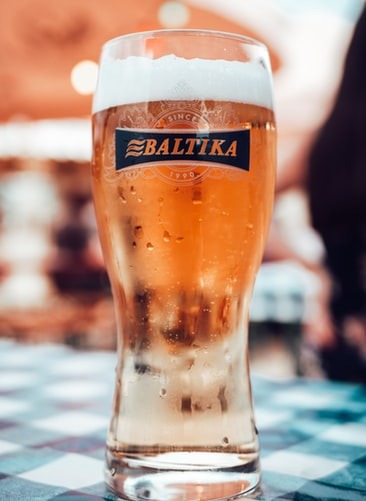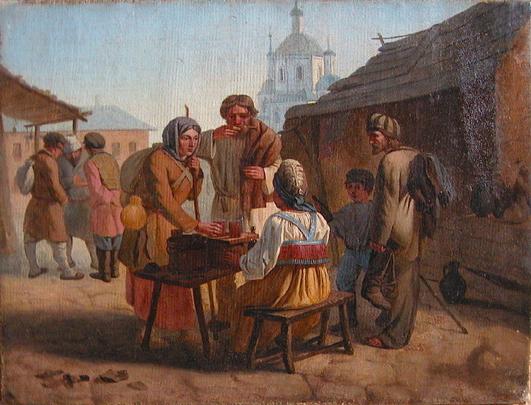Most drinkers probably know Russia as the birthplace of vodka, but there are other popular alcoholic beverages that are manufactured or brewed in the country as well, and one of them is the lager beer. However, Russia did not have breweries that specialized in lager beer until the 20th century due to the overwhelming demand for vodka, and all beer-making companies have their focus on making the best vodka not only for Russia but also the world.
In spite of the lateness of Russia when it comes to making lager beer, the country is currently one of the top exporters of beer around the world, and this is just a testament to how well Russians make alcoholic drinks besides vodka. Here is a history of how Russia was introduced to the lager and how it became a big exporter of beer today.
The Kvass
Before the introduction of lager beer to the Russians, there was a beer-like drink that is being made in the country for more than one thousand years called the kvass. Research suggests that the kvass was consumed by the Russians since the Middle Ages, and it became more common during the period when Peter the Great ruled the land from 1682 to 1725.
Besides being served as a beverage, the kvass was also used by the lower class as a primary ingredient for many Russian dishes like the botvinya, okroshka, and tyurya. Moreover, the peasants during the reign of Peter the Great may have consumed more kvass than water, as clean water is not readily available for them.
Kvass is made by fermenting rye bread, which can sometimes be replaced by wheat bread, and mixing it with herbs and fruits such as berries and raisins while it is in a liquid mixture. Since kvass is mostly made of different kinds of malt, its appearance and taste are very similar to lager beer, although it is slightly sweeter thanks to the added fruits and herbs. However, kvass has considerably lower alcohol content than regular beer, making it a relatively less addicting and safer beverage. Furthermore, kvass has such a low alcohol percentage that even children can drink it, although it is not recommended. It was also once considered a healthier alternative to soda.
Today, the kvass brewing industry in Russia is still alive and is still earning millions despite the prominence of lager beer and soft drinks in the country. Kvass is still consumed and sold in order to preserve a part of the history and culture of Russia.
The Modern Russian Beer
The lager beer, which is called pivo in Russia, did not become immensely popular in the country until the early 1990s when the Baltika Breweries was established in 1990. Interestingly, the company was already present in Russia since 1978, but the construction of the factory was only finished at the start of the 90s.
Soon after the founding of Baltika, several other companies have also started to pop up in other parts of Russia, such as the Tinkoff Brewery and the Baltic Beverages Holding, which currently holds a large share of Baltika Breweries.
Baltika Breweries have created many kinds of lager beers, but the most popular ones are the Baltika #3 Classic, the Baltika #6 Porter, and the Arsenalnoye Extra Lager. It is important to note that Russian beer is categorized by color, so you will see many bottles that are labeled Dark, Semi-Dark, Light, and Red. Darker beers typically have higher alcohol levels, while lighter ones have average alcohol content.
In addition, there are some Baltika beers that have an alcohol content that reaches for up to 10%, such as the Baltika #9 Extra Strong (9% alcohol) and the Baltika Russian Imperial Stout (10% alcohol).
Craft Beer in Russia
The previously mentioned company, Tinkoff Brewery, is one of the breweries that started the craft beer craze in Russia from the late 90s up to the present. Tinkoff Brewery was first established in St. Petersburg as a pub that makes its own beers in 1998, but the great taste of its beer and the excellent atmosphere in the bar turned Tinkoff Brewery into a popular brand that is one of the fastest-growing companies in the country.
Today, Tinkoff Brewery’s bottled beers are no longer available after the company was bought InBev, another large brewing company, in 2005. But the Tinkoff brewpubs are back to making craft lager beers after the acquisition.
Being the fourth-largest beer market, Russia and the beer-making companies operating in it will still flourish even if the local market is dominated by vodka and kvass. Not every Russian like the taste of kvass and the high alcohol content of vodka, which is why the beer will still be present in every pub, tavern, or bar in Russia as an excellent alternative to the standard Russian drinks.
Kinds of Russian Beer
Nevskoe Imperial
Type: Pale lager
Most Like: Pilsner Urquell
Why: Similar to Hootie and his merry band of blowfish, this beer had a triumphant debut in the early 1990s and immediately gained recognition for its consistently high-quality flavor. Contrary to Hootie, this beer has remained a favorite, (perhaps because of its robust flavor and fragrance of hops).
Zhigulevskoye
Type: Pilsner
Most Like: Heineken
Why: Zhigulevskoye, an easily used beverage, was essentially the only brand of beer accessible during the Soviet era. A guy by the name of Alfred von Vacano created it for the first time in 1881. Thankfully, that time has passed and this beer has been redesigned and reintroduced to the world as a reasonably priced, tasty pilsner with a twist-off plastic top, so you can be sure it’s excellent.
Ochakovo
Type: Pale lager
Most Like: Birra Moretti
Why: Because it is all about science, this beer would be a favorite of Bill Nye. It was created in 1978 to give guests of the 1980 Summer Olympics a Russian-made alcoholic beverage. It uses fine-mesh polymeric membranes and cold-filtering technologies to remove even the tiniest yeast particles. So go ahead and educate yourself about polymeric membranes before rewarding yourself with one of their products.
Baltika No. 3
Type: Pale lager
Most Like: Harp
Why: Baltika, the brand name of the biggest brewery in Eastern Europe, is sold in at least 13 different variants across the world, with No. 3 being the most well-liked and the winner of the bafflingly ambiguous prize category “The Most People’s Brand”. Baltika is often distinguished by its lightness and crisp finish, making it a favorite in Russian sports events like bandy!
Permskoye Gubernskoye
Type: Pale lager
Most Like: Sapporo
Why: Guber, a European pale lager with an ABV of 5.2%, is on the stronger side of Russian beers and has a vivid bitter flavor. The Perm Brewery, which is tucked away in the Russian highlands, is where the beer originally made its appearance. similar to a Yeti.
Rifey
Type: Pale lager
Most Like: SapporType: Pale lager
the most: Amstel
Why: Rifey’s name is taken from an old Greek phrase for the Ural mountains, making it sound like something you’d enthusiastically perform at a club. Enjoy one on your couch as you sit back and wait for all the replies to come in. Rifey’s distinct flavor has been characterized as bright and cheerful, much like your eHarmony profile description.
Why: Guber, a European pale lager with an ABV of 5.2%, is on the stronger side of Russian beers and has a vivid bitter flavor. The Perm Brewery, which is tucked away in the Russian highlands, is where the beer originally made its appearance. similar to a Yeti.
Yarpivo
Type: Pilsner
Most Like: Prima Pills
Why: Yarpivo is a very well-liked Russian brew with a noticeable amber hue and a little hop fragrance. The fact that it is filtered at low temperatures and produced with only the finest grains and hops is what makes it so unique. Consequently, it’s basically the polar opposite of Big Flats.
Stary Melnik
Type: American lager
Most Like: Budweiser
Why? Stary is a fantastic entry-level beer for Western drinkers. Crisp, mellow, and simple to drink. Additionally, it features an old-fashioned, sturdy windmill on the label, so the more you drink, the more you’ll feel like you’re promoting renewable energy and reducing your reliance on overly sugary imported beer.
Tolstiak
Type: Light lager
Most Like: Coors Light
Tolstiak earned “Beer of the Year” in 2000, which is why. In 2000, Kid Rock was named “Best New Artist”. Choose a Tolstiak as you’ll definitely need a drink after you realize how well-known Kid Rock was in 2000. Tolstiak is a light beer with a hoppy flavor and, contrary to what Kid Rock has always been called, is “a genuine men’s drink that can be enjoyed endlessly.”
Sibirskaya Korona
Type: Witbier
Most Like: Hoegaarden
Why: Sibirskaya Korona, a homonym of Corona with almost no other characteristics, was introduced in 1996 and has since become a completely fashionable Russian beer. There are no less than eight different types available, but the Originalnoye, with its mild flavor and gentle bitterness, is the most well-liked. a trait that was shared by everyone who listened to Joan Osborne’s popular song “One Of Us” in 1996.



